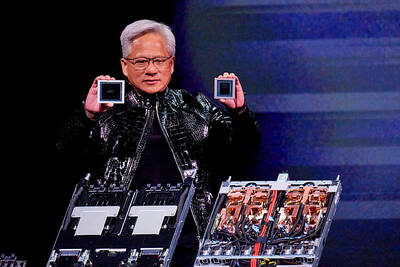The Bank of Taiwan (BOT) will begin yuan settlement services with the Bank of China (Hong Kong) (中銀香港) by the end of this month, lowering costs for people wishing to buy yuan notes, BOT chairwoman Susan Chang (張秀蓮) said yesterday.
The BOT signed a yuan clearing service agreement with the Hong Kong arm of the Bank of China in late July after the People’s Bank of China (中國人民銀行) appointed the Bank of China to handle yuan transactions for Taiwanese banks through its Hong Kong unit on July 13.
At present, Taiwanese banks trade yuan from HSBC and the Bank of America in Hong Kong. The new arrangement will allow local financial institutions to buy the Chinese currency in cash from the Taiwanese state-controlled lender rather than through the two foreign banks.
Chang said that the launch of the new services would reduce transaction costs for Taiwanese banks by eliminating foreign banks as intermediaries, adding that the public could expect to buy yuan cash notes for a lower price.
“We could save about 1 percent in the cost of yuan settlement services, which translates into about NT$1,000 on every purchase of 20,000 Chinese yuan [US$3,010],” Chang told reporters on the sidelines of a legislative meeting, citing central bank statistics.
The maximum amount of yuan bills the BOT can trade with the Bank of China (Hong Kong) at a time will be 50 million yuan and the balance of its Chinese currency account at the Hong Kong unit should be no higher than 3 million yuan, sources said.
In July, the central bank said the new scheme was expected to help solve problems in yuan cash exchanges with foreign financial institutions, including unstable cash note supply, damaged notes and high exchange costs.
Meanwhile, Mega International Commercial Bank (兆豐國際商銀), another state-controlled lender, said yesterday that it was also ready to do yuan clearing services, but didn’t specify a timeframe.
“We’re waiting for the central bank to issue an announcement on the matter,” a bank official said by telephone.
Since Taiwan started to allow the free exchange of Taiwanese and Chinese currencies in June 2008, Taiwanese banks have bought 8.1 billion yuan and sold 10.9 billion yuan, central bank data showed.

Nvidia Corp chief executive officer Jensen Huang (黃仁勳) on Monday introduced the company’s latest supercomputer platform, featuring six new chips made by Taiwan Semiconductor Manufacturing Co (TSMC, 台積電), saying that it is now “in full production.” “If Vera Rubin is going to be in time for this year, it must be in production by now, and so, today I can tell you that Vera Rubin is in full production,” Huang said during his keynote speech at CES in Las Vegas. The rollout of six concurrent chips for Vera Rubin — the company’s next-generation artificial intelligence (AI) computing platform — marks a strategic

Enhanced tax credits that have helped reduce the cost of health insurance for the vast majority of US Affordable Care Act enrollees expired on Jan.1, cementing higher health costs for millions of Americans at the start of the new year. Democrats forced a 43-day US government shutdown over the issue. Moderate Republicans called for a solution to save their political aspirations this year. US President Donald Trump floated a way out, only to back off after conservative backlash. In the end, no one’s efforts were enough to save the subsidies before their expiration date. A US House of Representatives vote

REVENUE PERFORMANCE: Cloud and network products, and electronic components saw strong increases, while smart consumer electronics and computing products fell Hon Hai Precision Industry Co (鴻海精密) yesterday posted 26.51 percent quarterly growth in revenue for last quarter to NT$2.6 trillion (US$82.44 billion), the strongest on record for the period and above expectations, but the company forecast a slight revenue dip this quarter due to seasonal factors. On an annual basis, revenue last quarter grew 22.07 percent, the company said. Analysts on average estimated about NT$2.4 trillion increase. Hon Hai, which assembles servers for Nvidia Corp and iPhones for Apple Inc, is expanding its capacity in the US, adding artificial intelligence (AI) server production in Wisconsin and Texas, where it operates established campuses. This

US President Donald Trump on Friday blocked US photonics firm HieFo Corp’s US$3 million acquisition of assets in New Jersey-based aerospace and defense specialist Emcore Corp, citing national security and China-related concerns. In an order released by the White House, Trump said HieFo was “controlled by a citizen of the People’s Republic of China” and that its 2024 acquisition of Emcore’s businesses led the US president to believe that it might “take action that threatens to impair the national security of the United States.” The order did not name the person or detail Trump’s concerns. “The Transaction is hereby prohibited,”